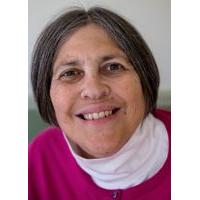11 Feb Hospice Providers Paid Same Rate Regardless of Services Provided
MedicalResearch.com Interview with:
Joan M Teno, MD, MS
Professor of Medicine
Division of Gerontology and Geriatrics
Cambia Palliative Care Center of Excellence
University of Washington
Medical Research: What is the background for this study? What are the main findings?
Dr. Teno: Hospices in the US are paid a daily rate, regardless of the service delivered. Key to hospice patients dying comfortably is that the caregiver and dying person received the needed visits by hospice professional staff, such as a nurse or social worker. These staff are trained to assess the patient and make appropriate changes to care plan to ensure the comfort and safety of the hospice patient. Multiple studies attest to the finding that pain and other symptoms exacerbate in the last days of life – key is the primary caregiver, usually a close family member receives the need training in administering of medicine to ensure the dying person is comfortable in the last hours of life.
We studied visits pattern by professional staff in the last 2 days of life finding that one in eight hospice patients were not visited.
While we would not expect every patient to have visits, there was several key finding that raised concern.
- First, blacks were 30% less likely to receive visits compared to whites
- Second, 16% persons dying in a nursing home were not visited – historically, bereaved family members identify concerns with the quality of end of life care in NH, even when the person is on hospice services.
- Third, one in five persons who died on Sunday were not visited in the last 2 days of life – which raises a concern with how hospices are staffing weekend coverage. There is nothing that would suggest biologically that persons don’t experience pain while dying on sturdy.
Additionally, the provision of these visits varied by geographic region in the country and by hospice program which suggest this is the practice of organization and not patient preferences.
Medical Research: What should clinicians and patients take away from your report?
Dr. Teno: Choose your hospice wisely because there is substantial variation in visits patterns, for me a key process that is lined to quality.
The other important aspect is that this research was conducted as part of research funded by Center for Medicare and Medicaid Services as part of the efforts to ensure that hospice payment is meeting the needs of dying persons and their family.
CMS in response to these concern provide a Service Intensity Adjustment that will hospice programs to provide these professional visits in the last week of life up to 4 hours per day. It is hope that this change in payment policy will ensure that the person receive the right support to the dying person and the family caregiver.
Citation:
Dr. Joan Teno (2016). Hospice Providers Paid Same Rate Regardless of Services Provided MedicalResearch.com
Last Updated on February 11, 2016 by Marie Benz MD FAAD

